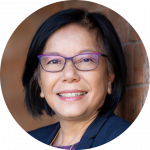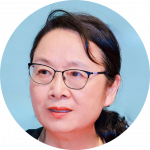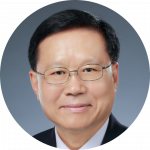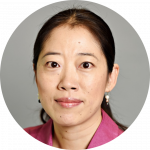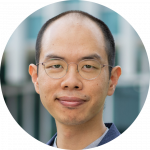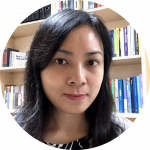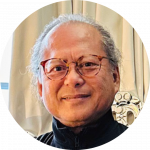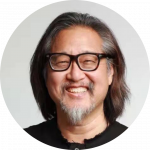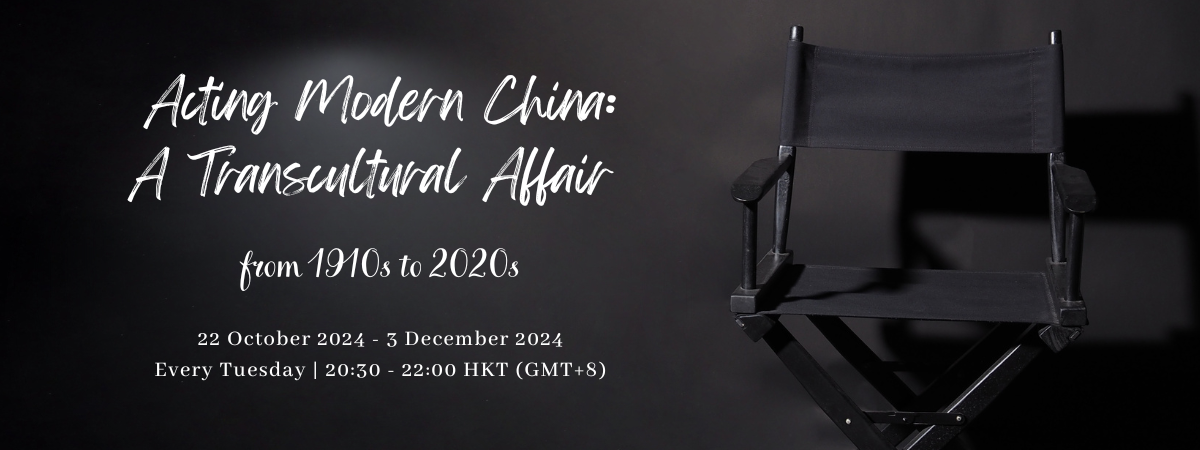
Important Notice (8 December 2024)
Important Notice (8 Dec 2024)
Participants who wish to request the conference video links should complete the online form by clicking on “Request Conference Recordings“. The links will be shared within seven working days.
Important Notice (18 Nov 2024)
Two seminars have been swapped in our schedule:
Week 5: 11-19-2024 (1990s/2000s)
Topic: When Puccini Meets Shakespeare: Transnational Stage in Motion
Convener: Paul Fung
Barbara MITTLER, “Whose Music? Authenticity as Weapon: Turandot in China—1998 and Beyond.”
Anna TSO, “Shakespeare’s Macbeth in Hong Kong 2017: A Jungian Interpretation?”
Week 6: 11-26-2024 (2010s)
Topic: From Macbeth to Trump: Translating Theater across History, Politics, and Genre
Convener: Barbara MITTLER
Isaac HUI, “Cantonese translations of the works of Shakespeare and Ben Jonson and early modern theatre in China and Hong Kong—A View from 2005.”
Frederick LAU, “Trump on Stage: Cantonese Opera in Hong Kong—A View from 2019.”
Conference Description
An International digital conference on “Acting Modern China: A Transcultural Affair”
This conference aims at further advancing the existing scholarship with comparative and interdisciplinary approaches to Chinese Performance Studies. It critically examines crucial events of theater culture in the past century in Hong Kong, Mainland China, Taiwan, and their trans-continental paths to Chinatown in San Francisco, Japan, and beyond. It features leading scholars from diverse fields of translation, theater studies, anthropology, musicology, East Asian Cultural Studies, and English. Fourteen speakers will each presents a bird-view history from 1910s to 2020s, with a focus on a landmark event in each decade, and its continuous history across regional, national, and international boundaries to delineate a new roadmap of cross-cultural, trans-national, and inter-disciplinary performance studies.
Nancy Yunhwa RAO, in Week One, for example, starts with a crucial year in 1924, which witnessed the opening of Mandarin Theater in San Francisco, and move back and forth in history to examine critical issues such as sojourner communities, global theater, and the allure of theater in translating culture, language, and heritage. Siyuan LIU couples this cross-ocean theater story with a study of the influence of Japanese leftist Avant-Garde theater as seen in the introduction of European-style proletarian puppet theatre to Tokyo and then to Shanghai in the last 1920s. The essay points to the ideological and artistic vocabularies shared by the worldwide proletarian theatre movement inspired by the Soviet Revolution, while also complicating the notion of “sharing” as the specific ideological and artistic environment in each country affected the dramatic/performatic circumstances.
Moving from cross-cultural theater practice to educational history, Xiaomei CHEN, in Week Two, discusses the achievements of the National Drama School established in 1935 by the KMT nationalist government, which had trained more about 1,000 theater, film, opera artists, who subsequently became leaders and players in the PRC. She explains why one of the most productive periods of a drama institution could occur in the most challenging years of war-torn China when campus relocations, artist migrations, poverty, and lack of recourses had paradoxically spurred the most brilliant theater productions and artist training. Shifting from institutional history and regional culture in Jiang’an to Chongqing in 1940, Tarryn CHUN takes huaju Foggy Chongqing and other wartime plays as a point of departure to explore debates surrounding stagecraft and analyses how the contestation over scenography, lighting, and special effects influenced theatre theory and dramaturgy at a time of great political exigency amidst war crises. She argues that certain atmospheric effects can be created most realistically onstage with the aid of scenography with specialized materials and technical knowledge. Yet, many Chinese theater artists were turning to political theater that served the war effort which often eschewed sophisticated technical components, or even physical stages.
Week Three focuses on the golden period of socialist performance, as seen in Kwok-kan TAM’s exploration of the 1956 Beijing adaptation of Ibsen’s A Doll’s House with sophisticated scenographic, choreographic, and acting skills to produce ideological message via impactful effects on the audience. The performance had lasting impact with a 1962 production of A Doll’s House in Shanghai following similar artistic designs, again winning the acclaim of the Shanghai audience. These successful productions resulted in Li Jianwu’s 1963 theory of socialist performative discourse which influenced subsequent theater practice. Speaking on a different genre of dance drama, Emily WILCOX analyses revolutionary internationalism and Third World solidarity in the mid-1960s, when an explosion of new choreography portraying revolutionary activities in Asia, Africa, Latin America, and their diasporas gave rise to their prominent representations on Chinese stage. Exploring Fires of Fury Are Burning produced in 1964 by the People’s Liberation Army General Political Department Song and Dance Ensemble, Wilcox engages recent scholarship on the intellectual history of Tri-continentalism to consider how these works articulate an early version of leftist South-South solidarity.
Week Four moves into the 1970s Cultural-Revolutionary period and the 1980s early post-Mao China when model theater gave away to the revival of Chekhov and other European drama. Using Taking Tiger Mountain by Strategy in 1970 as a case study, Xing FAN traces its creative process that began during the 1950s, zooming in on some challenges and strategies in portraying proletarian peasants, workers, and soldiers in the form of Beijing opera, and in theater practitioners’ negotiation with prevalent ideology while making artistic decisions in their aesthetic pursuits. Moving into the ensuing decade, Paul FUNG extends our inquiry of theatricality to the 1980s’s cultural fever of the fifth-Generation cinema. FUNG begins with his analyses of Li Tuo and Zhang Nuanxin’s seminal essay, “The Modernization of the Language of Film” (1979), in which they proposed that new Chinese cinema should abandon the use of dramatic conflicts in film and capture the ordinary lives of Chinese people with a realistic and less intrusive style. Comparing the effect of dramatic conflicts and film conflicts, FUNG examines Gong Li’s transition from a theatre student at the Central Academy of Drama in the 1980s, where she was heavily influenced by the Stanislavsky method, to a world-acclaimed actress through her performance in Red Sorghum (1987), Ju Dou (1990) Raise the Red Lantern (1991).
From a national renaissance to trans-national fertilizations, Week Five turns to the 1990s and 2000s when Puccini meets Ben Jonson in different historical, cultural, and aesthetic contexts. Barbara MITTLER explores how Zhang Yimou’s staging of Puccini’s Turandot in the Forbidden City in 1998 revealed a lasting appeal of “exoticist” works of the early Twentieth Century, which had featured elements of European-imagined “Oriental despotism” that must “obviously” be in China. Mittler argues that a European discourse of fear, exclusion and hate in the figure of Turandot therefore jointly became an “authentic Chinese” performance that needs to be detangled in transcultural operatic encounters. Puccini’s popular performance contrasts shapely with Ben Jonson, whose works, as Isaac HUI demonstrates, exist more in Chinese in academic research rather than in translation. Even if there are translations of Jonson in Chinese, they are usually done in excerpts in academic studies written in Chinese. Isaac HUI explores how much Chinese readers/audience know about Shakespeare’s contemporaries through the example of Jonson, examining how Jonson was translated, exported, represented, and presented on stage in Hong Kong as seen in the performances Jonson’s Volpone since the 1990s.
By the same token, Week Six connects a Hong Kong production of Shakespeare’s Macbeth in 2017 with a Cantonese opera Trump on Show staged in 2019. Using Carl Jung’s psychoanalytic approach to investigate the dialogue and conversation between Macbeth and Lady Macbeth, Anna TSO examines the achievements of Tang Shu-wing, a renowned Hong Kong theater director, and his ingenious adaptation of Shakespeare’s Macbeth for his world-acclaimed 2017 tour. From another perspective, Frederick LAU studies the Cantonese opera Trump on Show in 2019 which exemplifies an evolving and transformed Hong Kong cultural landscape. The innovative opera portrays a dramatic character Donald Trump who meets Mao Zedong, Zhou Enlai, and Kim Jong-u, in the traditional style of Cantonese opera; the successful show of Trump in Cantonese singing and acting has transformed global politics, historical figures, personal love stories, and a regional genre into an entertaining theater that attracted contemporary audience in post-handover Hong Kong.
Finally, Week Seven brings together two prominent theater scholars and practitioners from the Mainland and Taiwan: Chengzhou HE explores an aesthetic breakthrough in two modern Kunqu Plays around 2020, with a unique form of fictional realism on the stage, implicit ways of conventionalization, and the incorporation of fashion elements on stage. These aesthetic innovations facilitate kunqu’s re-entry into the landscape of contemporary Chinese theatre as a forceful agent of cultural intervention. Stan LAI takes the conference audience through his creative journey that spans five decades, starting in Taiwan, and now based in Shanghai, with stops in Hong Kong, Singapore, and the U.S. Lai’s diverse creative choices and strategies, spurred by different inspirations and circumstances throughout the stages of his career, resulted from his reflection on the larger context of artists making theatre in the Chinese speaking world. In conjunction with this conference, on the last day of the conference on December 3, Dr. Stan LAI, the most important playwright in the Chinese and Sinophone cultures, will present his conference paper in person and online, and participate in the local events with Hong Kong theater communities during the same week.
In additional to scholarly contributions and exchanges of ideas, this conference format offers a unique remote learning opportunity for graduate student training, as seen by a graduate seminar on Chinese performance studies that Professor Barbara Mittler has planned for her students at Heidelberg University. Her students would read the conference papers, together with other relevant scholarly works, attend the presentations, and have post-presentation discussion with their peers. We hope more graduate students in other parts of the world will also benefit from this digital conference.
This conference is organized by the Department of English of The Hang Seng University of Hong Kong (HSUHK) with the generous support by the President’s Office, The School of Humanities and Social Science, and the Department of English, at HSUHK.
This conference is co-chaired by Xiaomei Chen (Distinguished Professor Emerita at UC Davis), Kwok-kan Tam (Chair Professor and Dean of School of Humanities and Social Science, SHSS), Anna Tso (Head of English, HSUHK), Paul Fung (Associate Dean of SHSS), and Barbara Mittler (Co-director of the Heidelberg Center for Transcultural Studies at Heidelberg University in Germany).
For information, please contact Xiaomei Chen at xmchen@ucdavis.edu
For technical support for the conference link and website, please contact Joyce Lo at joycelo@hsu.edu.hk
Conference Programme
Date:
22 October 2024
Welcome Remarks:
Professor Kwok-kan TAM
Dean, School of Humanities and Social Science
Convener:
Barbara MITTLER
Presentation:
Nancy Yunhwa RAO, “Mandarin Theater and Great China Theater in San Francisco — A View from 1924.”
Siyuan LIU, “Revolutionary Avant-Garde Puppetry from Germany, through Japan, to China — A View from the Late 1920s.”
Date:
29 October 2024
Convener:
Kwok-kan TAM
Presentation:
Xiaomei CHEN, “The Jiang’an Years of the National Drama School: Where the Journeys of Thousand Theater and Film Artists Started—A View from 1939.”
Tarryn CHUN, “Stagecraft under Fire–Backstage in 1940.”
Date:
5 November 2024
Convener:
Anna TSO
Presentation:
Kwok-kan TAM, “The Socialist Discourse of Performativity—A View from 1956”
Emily WILCOX, “Dancing Inter-Racial Solidarity: Embodied Critiques of US Anti-Black Racism and Police Violence in the Chinese Dance Drama Fires of Fury are Burning (1964)”
Date:
12 November 2024
Convener:
Xiaomei CHEN
Presentation:
Xing FAN, “Model Theater at its Peak–A View from 1970.”
Paul Fung, “From Stanislavsky to the Fifth-Generation Cinema: A Theatrical Transformation of Gong Li in Zhang Yimou’s Film—A View from the 1980s.”
Date:
19 November 2024
Convener:
Paul FUNG
Presentation:
Barbara MITTLER, “Whose Music? Authenticity as Weapon: Turandot in China—1998 and Beyond.”
Isaac HUI, “Cantonese translations of the works of Shakespeare and Ben Jonson and early modern theatre in China and Hong Kong–A View from 2005.”
Date:
26 November 2024
Convener:
Barbara MITTLER
Presentation:
Anna TSO, “Shakespeare’s Macbeth in Hong Kong 2017: A Jungian Interpretation?”
Frederick LAU, “Trump on Stage: Cantonese Opera in Hong Kong—A View from 2019.”
Featured Event
Date: 3 December 2024
Time: 1:30pm – 3:00pm
Venue: Lecture Hall (CR002), G/F Creative Humanities Hub, Yuen Campus, HSUHK
Convener: Kwok-kan TAM
Presentation:
Stan LAI: “Making Theatre in the Chinese-speaking World, 1984-2024.”
Date:
3 December 2024
Convener:
Kwok-kan TAM
Presentation:
Chengzhou HE, “Modern Kun Opera Plays and Their Implications, A View from 2022.”
Stan LAI: “Making Theatre in the Chinese-speaking World, 1984-2024.” (Recording)
Speakers
(In order of appearance)
Time Zone for reference
| Week | Date | Period | Hong Kong | Berlin | London | Los Angeles / Vancouver | New York / Toronto |
| (UTC + 8) | (UTC+2) | (UTC+1) | (UTC-7) | (UTC-4) | |||
| 1 | October 22, 2024 | 1910s/1920s | 20:30 | 14:30 | 13:30 | 5:30 | 8:30 |
| 2 | October 29, 2024 | 1930s/1940s | 20:30 | 13:30 | 12:30 | 5:30 | 8:30 |
| 3 | November 5, 2024 | 1950s/1960s | 20:30 | 13:30 | 12:30 | 4:30 | 7:30 |
| 4 | November 12, 2024 | 1970s/1980s | 20:30 | 13:30 | 12:30 | 4:30 | 7:30 |
| 5 | November 19, 2024 | 1990s/2000s | 20:30 | 13:30 | 12:30 | 4:30 | 7:30 |
| 6 | November 26, 2024 | 2010s | 20:30 | 13:30 | 12:30 | 4:30 | 7:30 |
| 7 | December 3, 2024 | 2020s | 20:30 | 13:30 | 12:30 | 4:30 | 7:30 |
